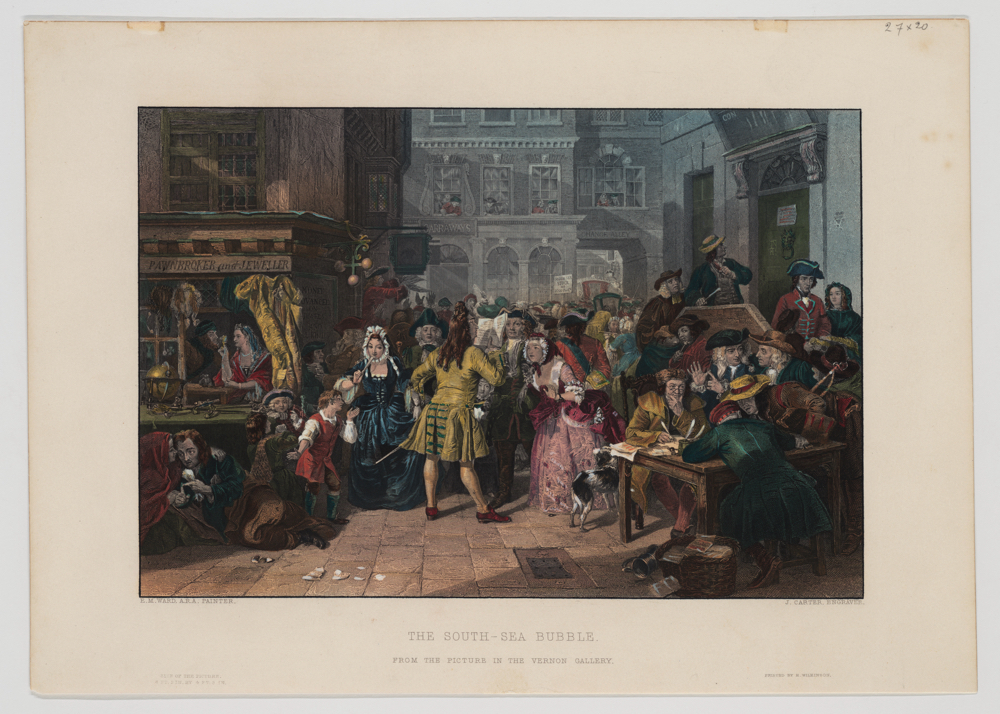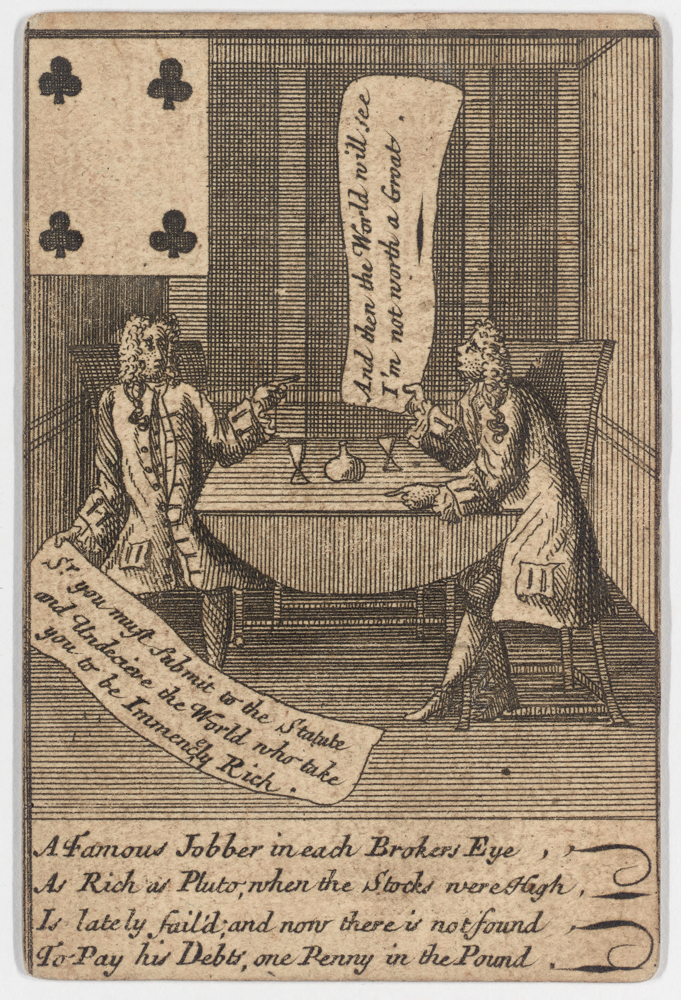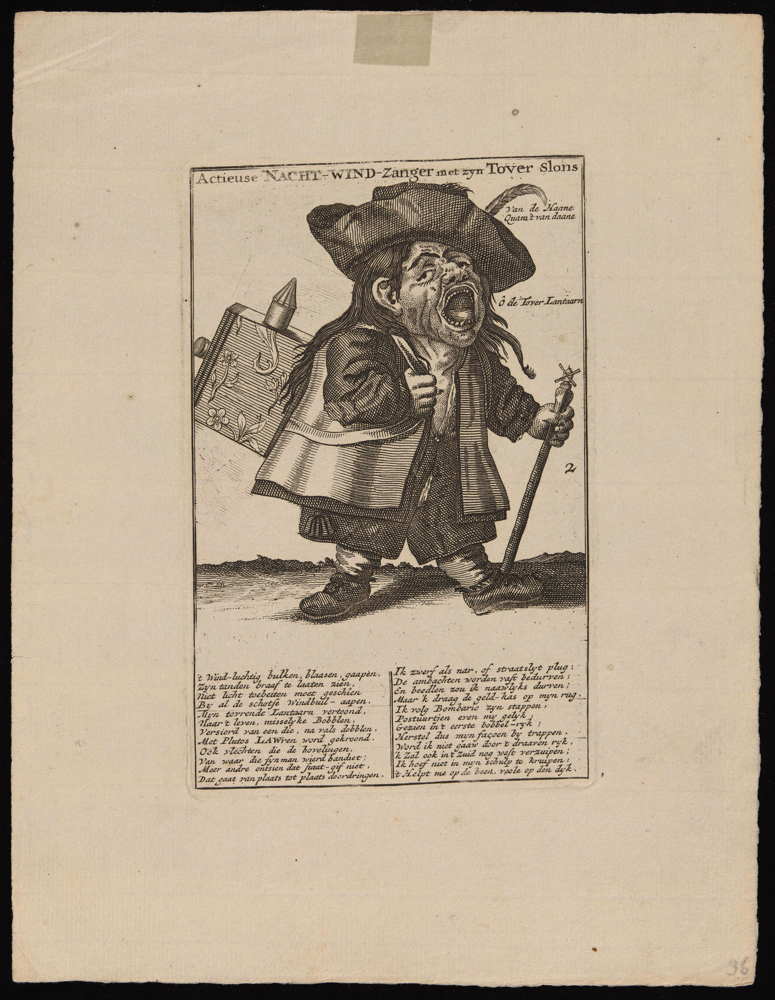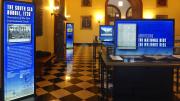In the north lobby of Harvard Business School’s Baker Library, beneath portraits of deans dating back to the school’s founding, glass cases adorned by glowing sky-blue signs capture the curiosity of passersby and disrupt the flow of foot traffic. “Addressing the National Debt,” “Marketing & Financial Transactions,” “Debt Acquisition Scheme,” and “The Crash,” the signs display. Within the cases are dozens of materials drawn from the Bancroft Collection, donated to the library in 1935: satirical prints, parliamentary acts, correspondences between brokers and investors, books, broadsides, and ballads. Collectively, they tell the story of the 1720 collapse of the South Sea Bubble, one of history’s earliest and most significant international financial crises. “British citizens from all walks of life invested in the South Sea Company,” the exhibit’s opening plaque reads. “As preserved through the multiple narratives of its time, the South Sea Bubble continues to survive as a cautionary tale.”
Conditions for a Crash
In 1711, English military spending associated with the Nine Years’ War and the ongoing War of the Spanish Succession with France left Great Britain facing a debt of approximately 9 million pounds. It was during this year that Tory leader and Lord Treasurer to-be Robert Harley founded the South Sea Company through an act of Parliament. Operating as a public-private entity, the company obtained exclusive trade privileges with Spanish colonies in the West Indies and South America in return for transforming government debt into company shares. When the War of the Spanish Succession ended in 1713, Spain gave Great Britain a license to conduct a slave trade in those colonies, and the contract was passed onto the South Sea Company, which worked with the Royal African Company to ship thousands of slaves across the Atlantic.

James Carter. The South-Sea Bubble. [London]: H. Wilkinson, [late 19th century].
Investors, including an increasing number of women, were attracted to the South Sea Company due to its robust support from the British state and extravagant publicity efforts, which involved the hire of propagandists and publication of the names of prominent noble shareholders, such as the King and Duchess of Kendal. Moreover, says guest curator Melissa Banta, people of the time were generally optimistic: “The printing industry was growing in London, there were higher rates of literacy, and people were learning more about investment opportunities.” By 1720, speculative fever had caused the stock price to surge from roughly 100 pounds in 1719 to 950 pounds by July of the following year. Then came the crash of late 1720. Shares plummeted in value, sending shockwaves through the nation. Many investors lost fortunes overnight, and some faced bankruptcy. The ensuing panic, coupled with concurrent financial crises in England, the Dutch Republic, and France that same year, gave rise to the first global stock market crash.
A Visual Legacy

Four of Clubs. In [South Sea Bubble Playing Cards]. London: Carington Bowles, 1721.
Kress Collection, Baker Library, Harvard Business School.
“What is really interesting, and somewhat remarkable, is the extent of visual material” documenting the “individuals who both caused and suffered from the crash,” says Laura Linard, senior director of Baker Library Special Collections and business history expert. (The library had originally planned the exhibit for 2020—the 300th anniversary of the Bubble—before the pandemic-induced worldwide economic crisis hit.) Linard and Banta point in particular to a display of 13 playing cards that satirize the event and depict English, Dutch, and French victims, as well as greedy, corrupt “stockjobbers” who served as intermediaries between brokers and investors.
The crash caused an uproar, and led politicians to demand a thorough investigation. Plays and poems criticized both the market and its participants. Amidst accusations of treason and fraud, the company’s directors were summoned to testify before Parliament, their assets seized to bolster company credit and offer compensation to victims. An extraordinary legacy of creative responses remains a defining feature of the calamity. “You wouldn’t think materials about a financial crisis would be beautiful,” Banta remarks, “but the satirical prints relating to the South Sea Bubble are remarkable and reveal how people responded to the crash through humor and artistry.”
“It’s a thrill when you’re researching something,” she continues, “and you find primary source examples in the collection. For example: the little pocket books used to calculate rates of interest; various decrees printed by the government; and depictions of people in London congregating in coffee houses. The materials give you a sense of how people were assimilating and exchanging the information.”

Stock-Jobber-"Actieuse Nacht-Wind-Zanger Met Zyn Tover Slons (The Night Singer of Shares, With His Magic-lantern)." In Het Groote Tafereel der Dwaasheid. Amsterdam, 1720.
Kress Collection, Baker Library, Harvard Business School.
Although the South Sea Bubble burst more than three centuries ago, Linard emphasizes that there’s much about the crisis that remains relevant to our contemporary world. “When we do exhibitions and the like for the [business school] community, we’re always trying to draw correlations between what is true today and what you can learn from historical precedent. Aspects of the South Sea Bubble, such as the situation of national debt, of a war that has gone for a longer period of time, and wide, wild speculation,” hold enduring lessons for the present and future alike.









